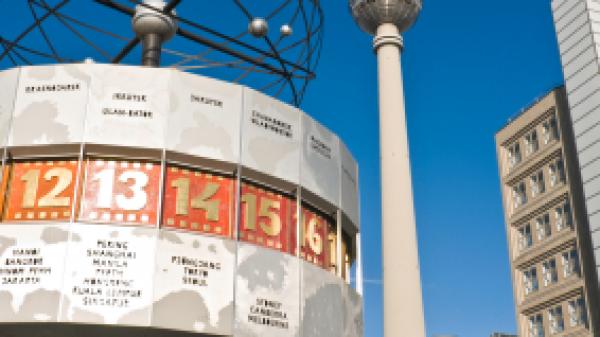Europe’s 2008 Daylight Saving Schedule Ends
Daylight saving time across most of Europe will end on October 26, 2008.

Many places around Europe, including Berlin in Germany, will end the 2008 daylight saving schedule on October 26, 2008.
©iStockphoto.com/fotoVoyager
Many people across Europe will need to remember to turn their clocks back by one hour in their local times when daylight saving time comes to an end on October 26, 2008. On this date, most countries in Europe will revert back to their local standard times.
Clocks Turn One Hour Back in Europe
Not all countries will turn the clocks back at the same time. For example, parts of Denmark (eg. Ittoqqortoormiit, Greenland) and Portugal (eg. Azores) will move the clock back from 1am local time to 12:00 midnight (or 00:00) on October 26, 2008. Countries such as the United Kingdom and Ireland, as well as most of Portugal and Spain’s Canary Islands, will shift the clock back from 2am to 1am at their local times on this date.
Countries such as Austria, Belgium, France, Germany, Italy, the Netherlands, Norway, Poland, Spain (except the Canary Islands), and the Russian Federation will turn the clocks back from 3am to 2am at their local times. Countries such as Bulgaria, Cyprus, Finland, Greece, Turkey, and Ukraine will turn the clocks back from 4am to 3am at their local times. timeanddate.com’s Upcoming Clock Changes has more information about time changes that occur in various countries when daylight saving time ends.
Europe’s Daylight Saving Time
The European Union’s (EU) daylight saving schedule runs from the last Sunday in March through the last Sunday in October. An EU directive states that the last Sundays in March and October would be the dates definitively adopted for the daylight saving schedule among EU countries.
Prior to the EU’s directive, during the 1980s many European countries had different daylight saving practices and this affected transport schedules and communications issues, especially for businesses, across Europe. In 1996 the EU standardized daylight saving time across most of Europe to ensure consistency with daylight saving times.
Time Zones
Listed below are the major time zones used across EU countries during the non-daylight saving period:
- Western European Time (WET), observed during the winter only in countries such as Denmark (Faroe Islands only), Portugal and Spain (Canary Islands only).
- Greenwich Mean Time (GMT), observed all year in Iceland and during the winter only in countries such as Ireland and the United Kingdom (main islands – England, Wales, Scotland and Northern Ireland.
- Central Europe Time (CET), observed in countries including Austria, Belgium, Germany, Poland and Sweden.
- Eastern Europe Time (EET), observed in countries including Estonia, Finland, Greece, Latvia and Lithuania.
During summer daylight saving time/summer time, Western European Summer Time (WEST) is used instead of WET, Central European Summer Time (CEST) is used instead of CET, and Eastern European Summer Time (EEST) is used instead of EET.
The United Kingdom and Ireland
It is important to note that the United Kingdom does not observe Greenwich Mean Time (GMT, also known as UTC) all year round. It reverts from British Summer Time (BST) to GMT when it ends its daylight saving schedule. Ireland switches from Irish Summer Time (IST) to GMT when daylight saving time finishes.
Note: Any reference to summer in this article relates to summer in the northern hemisphere.